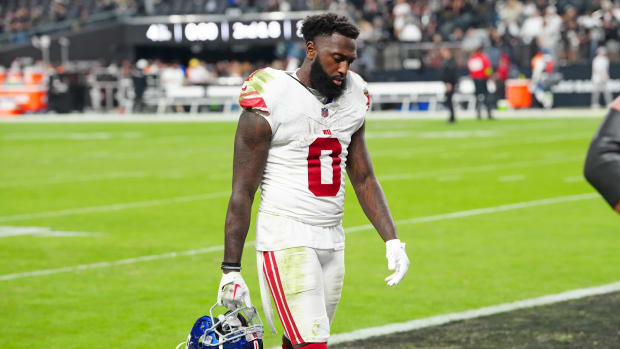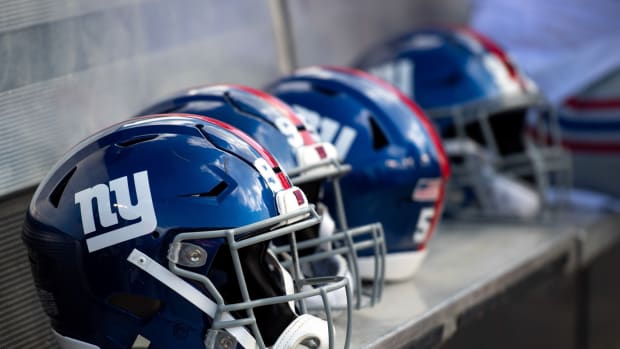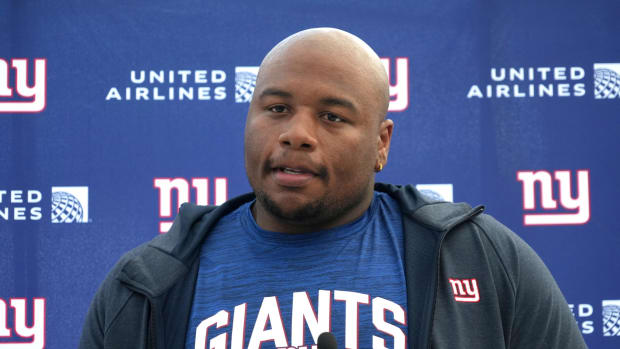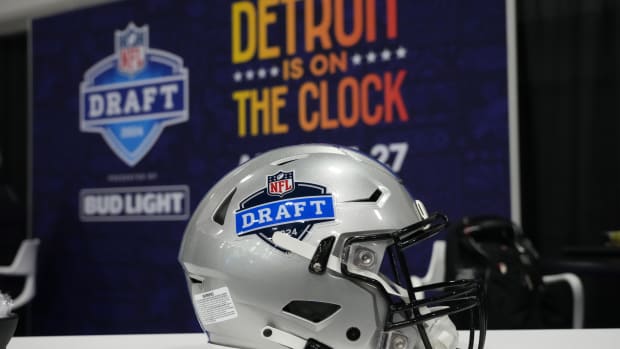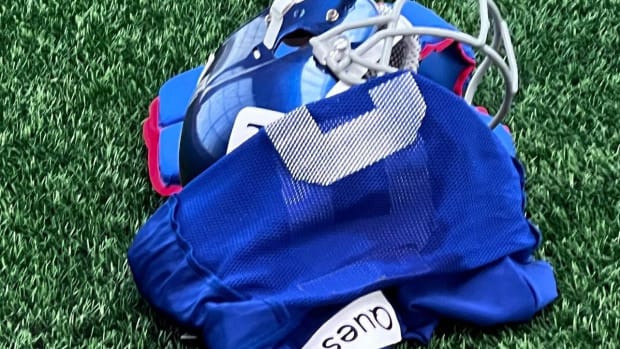New York Giants 2024 Draft Preview: Best Tight End Fits
Tight end has long been a sneaky need for the Giants. Will they spend a draft pick to address it?
At one point not too long ago, it looked as though the Giants were going to gravitate to more of a 12-personnel base on offense where the tight end would become the focus of the passing game, a la the old New England Patriots (Rob Gronkowski) and the Kansas City Chiefs (Travis Kelce).
The intention wasn’t bad, but the Giants' approach was questionable. New York took a low-risk/high-reward gamble on Darren Waller, whom they acquired in a trade with the Las Vegas Raiders for a third-round draft pick. When healthy, Waller has been among the game’s best tight ends. But the problem is that Waller hasn’t been healthy.
According to Sports Info Solutions, the Giants used 11-personnel 73 percent of the time, the fifth most in the league, but only had a success rate of 36 percent, 30th in the league. They ran 12-personnel 23 percent of the time (11th most in the league), with a success rate of 38 percent (26th).
For comparison purposes, the Chiefs used 11-personnel 61 percent of the time (22nd) with a 44 percent success rate (10th) and 12-personnel 28 percent of the time (4th in the league) with a 41 percent success rate (21st).
The point is that a dynamic and healthy tight end can be a blessing for an offense. While Waller has shown an ability to be dynamic, the health factor has been missing from his game. This, combined with the fact that the Giants lack a legitimate No. 1 receiver, was a factor in the passing game’s struggles, regardless of who the quarterback was.
Biggest Question: Will Darren Waller Retire?
Like it or not, Waller is still the best tight end on the roster when healthy. The problem, besides the fact that his hamstring injuries continue to flare up, is that he’s been contemplating retiring, which would create an even bigger hole than what already exists.
This is why the Giants, in our opinion, must get a legitimate No. 1 receiver who can create matchup nightmares for the defense. We feel that Daniel Bellinger, who was almost a forgotten man in the passing offense last year thanks to the arrival of Waller, can hold down the fort for the team this season as a pass catcher (even though he’s not quite as athletic as a healthy Waller) and leave the need for another tight end until next year.
As for Waller, we’d say there’s a better chance than not that he will retire. We don’t anticipate seeing him during the spring, and he’s indicated to The Athletic that he’ll likely make a decision by the end of the spring period, well before training camps begin.
While Waller has been said to be keeping in shape physically, we question how “in shape” mentally he would be given his time away. We understand that following a frustrating and disappointing season, players need time to decompress—and many of them do so by taking a couple of weeks to a month off after a season ends. But the feeling is the longer Waller drags this out and continues to pursue his other interests, the less likely he is to return for a second season with the Giants.
Lastly, for those fretting over the financials of the timing, a post-June 1 decision actually works better for the Giants, as they would see the cost savings on Waller jump from $6.705 million to $11.625 million, an amount that should be more than enough for the Giants to not only get through the summer and regular season, but which might even allow for them to do a contract extension later on in the season (safety Jason Pinnock, quarterback Drew Lock, receiver Darius Slayton, returner Gunner Olszewski, cornerback Nick McCloud, and punter Jamie Gillan are all among those whose contracts are set to end after the 2024 season).
Prospects
Day 1: Brock Bowers (Georgia)
Bowers has been one of the biggest playmakers in college football over the last couple of seasons. Although he may be a tight end, he’s led Georgia in receptions in each of his three seasons there. He’s an obviously prolific pass catcher who can get open and create after the catch. Bowers is also a capable blocker who can fulfill the two-way role demanded of an 11-personnel tight end.
He’s undersized compared to the historic NFL archetype at 6-foot-3, 243 pounds, and he doesn’t have the freaky athleticism boasted by some other tight ends to come out in recent years. However, Bowers is a versatile and technically sound football player good enough to land as a top-15 pick.
Day 2: Theo Johnson (Penn State)
Johnson is an athletic freak. At 6-foot-6, 257 pounds, he ran a 4.57-second 40-yard dash and posted a 39 ½ inch vertical leap. His traits draw comparisons to Jimmy Graham, but he isn’t that player just yet.
As a potential second-rounder, Johnson must improve his technique and consistency as both a blocker and receiver to reach his ceiling, but teams could collaborate with a player with his athletic upside.
Late Day 2/Day 3: Ben Sinnott (Kansas State)
Sinnott is our favorite of the group and falls within the range of where we think the Giants would make a move for a tight end (it won’t be in the first round). He was a “do everything” player for Kansas State and became one of their best players after starting out as a walk-on.
Sinnott, at 6-foot-4 and 250 pounds, has a versatile frame and can line up as an in-line or detached tight end, H-back, or fullback. He’s also a capable blocker who can “lose slow” at the line of scrimmage or spring ball carriers in space.
Sinnott, who reportedly had a top-30 visit with the Giants, is a good athlete in his own right, particularly considering his build, and was a valuable receiver for the Wildcats. We’re not sure he falls to Day 3, but at the very least, he does have third-round value. He can become a reliable safety blanket or a weapon in the receiving game, with the potential of eventually becoming a starter.
- Follow and like us on Facebook.
- Submit your questions for our mailbag.
- Follow Patricia Traina on Instagram.
- Check out the Giants Country YouTube Channel.
- Subscribe and like the LockedOn Giants YouTube Channel

